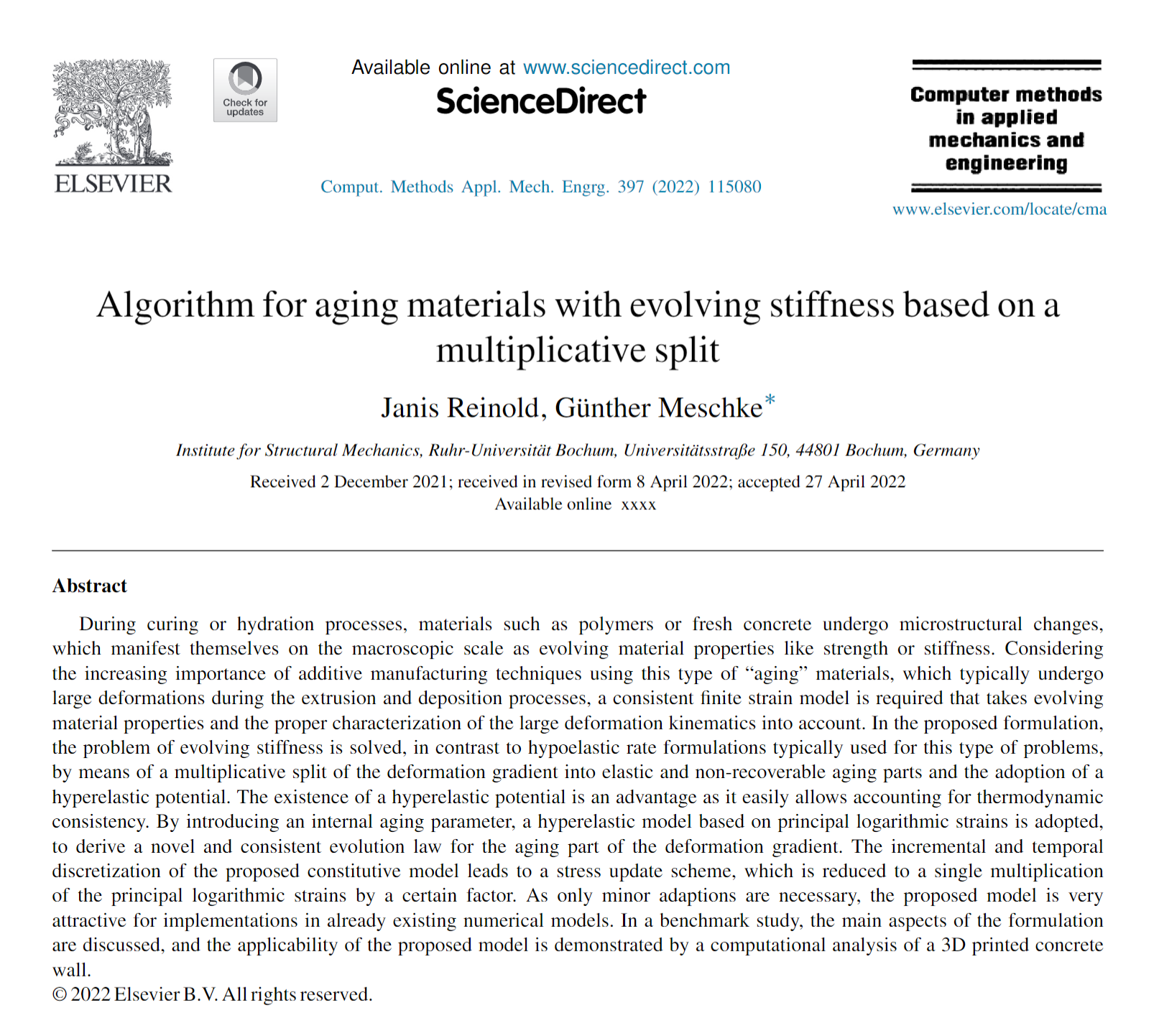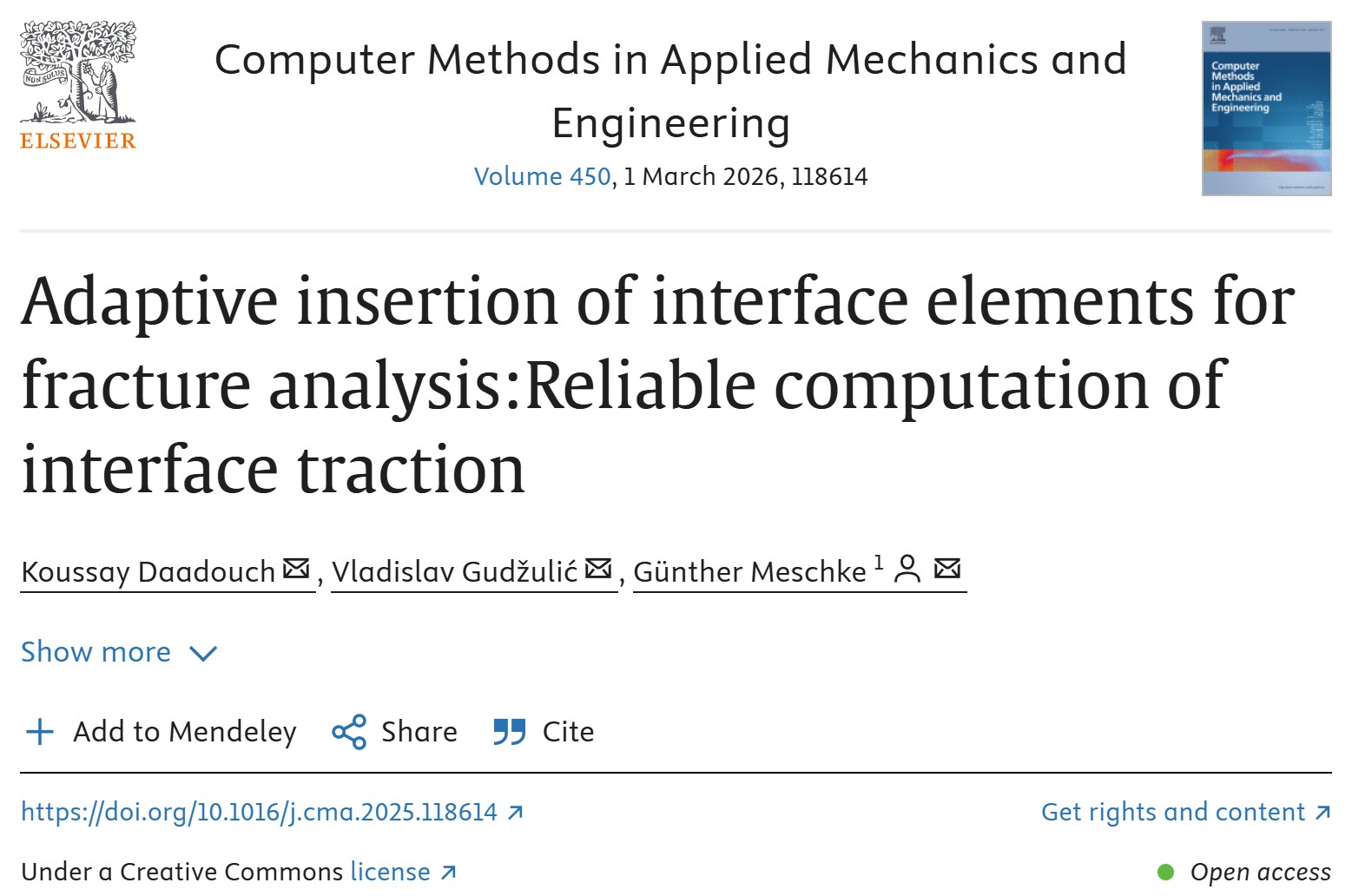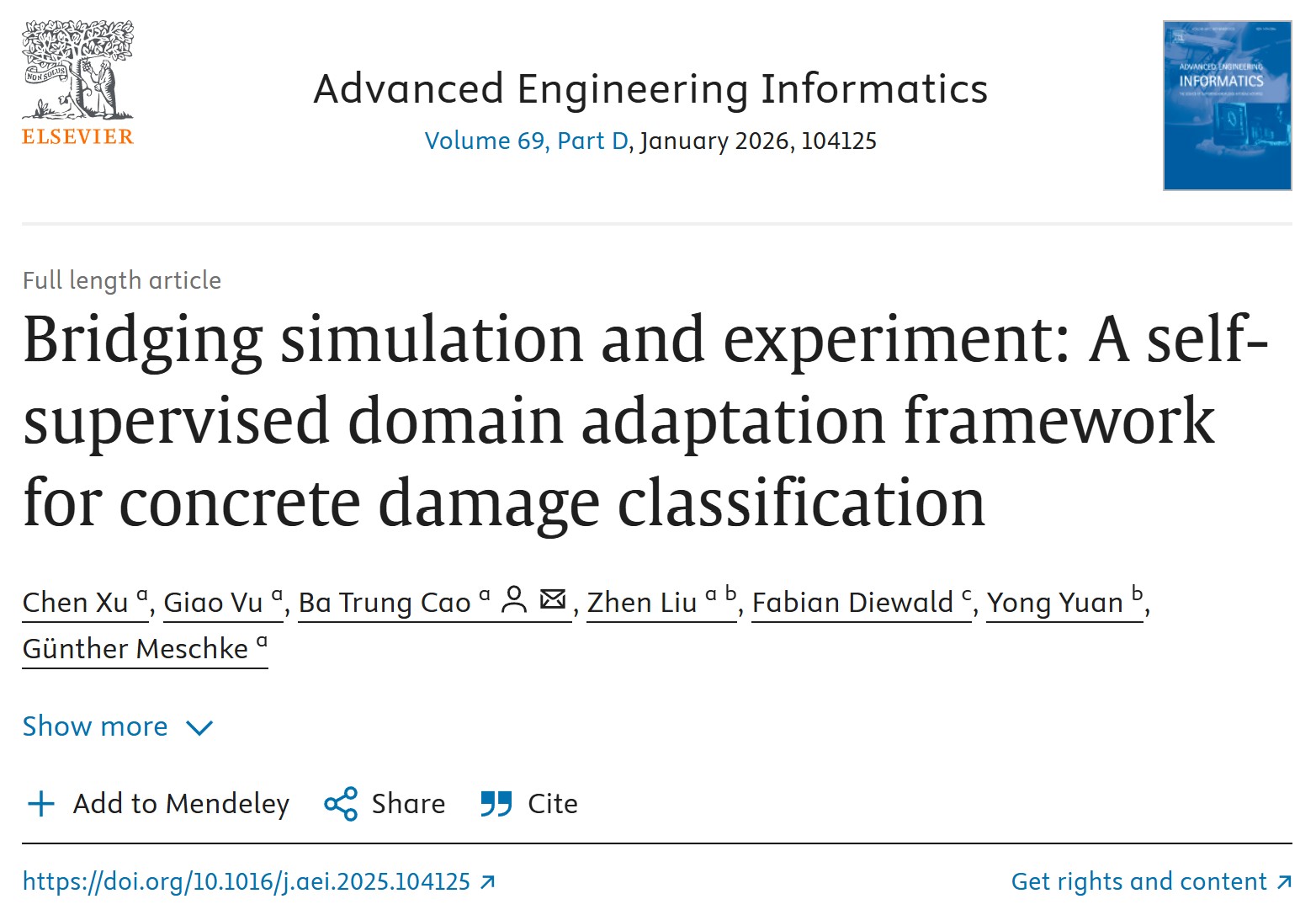
A new paper with the title "Algorithm for aging materials with evolving stiffness based on a multiplicative split" has been published in the international journal „Computer Methods in Applied Mechanics and Engineering".
Abstract:
During curing or hydration processes, materials such as polymers or fresh concrete undergo microstructural changes, which manifest themselves on the macroscopic scale as evolving material properties like strength or stiffness. Considering the increasing importance of additive manufacturing techniques using this type of “aging” materials, which typically undergo large deformations during the extrusion and deposition processes, a consistent finite strain model is required that takes evolving material properties and the proper characterization of the large deformation kinematics into account. In the proposed formulation, the problem of evolving stiffness is solved, in contrast to hypoelastic rate formulations typically used for this type of problems, by means of a multiplicative split of the deformation gradient into elastic and non-recoverable aging parts and the adoption of a hyperelastic potential. The existence of a hyperelastic potential is an advantage as it easily allows accounting for thermodynamic consistency. By introducing an internal aging parameter, a hyperelastic model based on principal logarithmic strains is adopted, to derive a novel and consistent evolution law for the aging part of the deformation gradient. The incremental and temporal discretization of the proposed constitutive model leads to a stress update scheme, which is reduced to a single multiplication of the principal logarithmic strains by a certain factor. As only minor adaptions are necessary, the proposed model is very attractive for implementations in already existing numerical models. In a benchmark study, the main aspects of the formulation are discussed, and the applicability of the proposed model is demonstrated by a computational analysis of a 3D printed concrete wall.
The article with the DOI 10.1016/j.jcp.2022.111123 has a 50 days' free access (until May 14, 2022)
https://doi.org/10.1016/j.cma.2022.115080

"Adaptive insertion of interface elements for fracture analysis: Reliable computation of interface t
more...
Chen Xu, Giao Vu, Ba Trung Cao, Zhen Liu, Fabian Diewald, Yong Yuan, and Günther Meschke are the au
more...